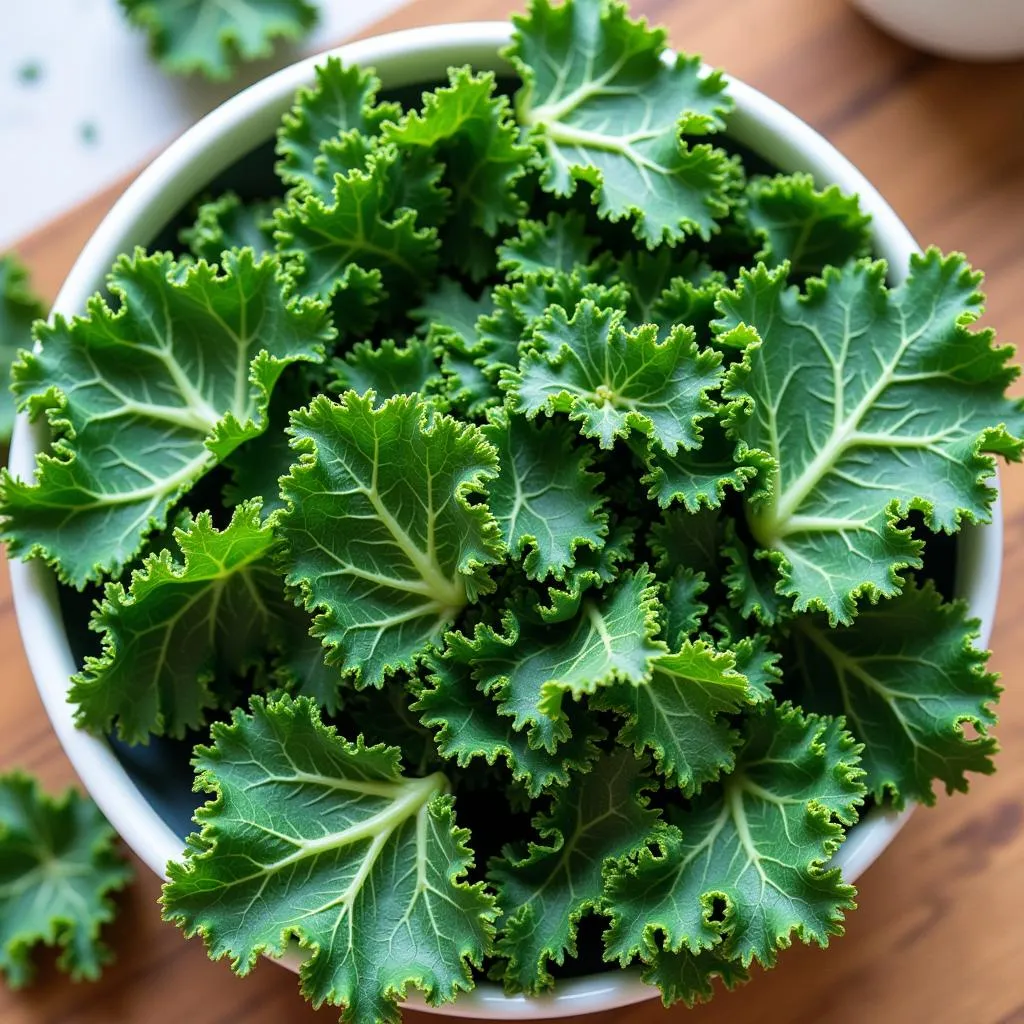African American Kale Recipes: A Celebration of Flavor and Tradition
Kale is a staple ingredient in many African American kitchens, offering a unique blend of flavor, nutrition, and history. This green leafy vegetable has been a part of the African American culinary landscape for generations, passed down through family recipes and cherished traditions. Today, we delve into the world of African American Kale Recipes, uncovering their rich history, exploring diverse preparations, and uncovering the secrets behind their irresistible appeal.
A Journey Through Time: The History of Kale in African American Cuisine
Kale, a member of the Brassica oleracea species, has a long and fascinating history. It’s believed to have originated in the eastern Mediterranean region and was brought to the Americas by European colonists. Early African Americans, many of whom had been enslaved and forced to work on farms, relied heavily on kale and other greens as a source of nourishment. The vegetable’s affordability and resilience made it a practical choice for families with limited resources.
Over time, African Americans developed unique ways of preparing kale, reflecting their culinary traditions and cultural heritage. These recipes, passed down through generations, often included ingredients such as smoked meat, garlic, onions, and spices, creating dishes that were both flavorful and satisfying.
Exploring the Diversity of African American Kale Recipes
African American kale recipes showcase a rich tapestry of culinary traditions, with each region boasting its own unique interpretations. From the soulful Southern fried kale to the robust West African Suya spiced kale, the variations are endless.
Southern Fried Kale
Southern fried kale is a beloved dish that exemplifies the hearty flavors of the South. Often prepared with smoked meats like bacon or ham, this recipe infuses the kale with a smoky depth and savory richness. The addition of spices like black pepper, cayenne pepper, and garlic powder enhances the flavors, creating a truly satisfying and comforting dish.
West African Suya Spiced Kale
For a taste of West African flair, try Suya spiced kale. This recipe features a blend of spices commonly used in the preparation of Suya, a popular Nigerian street food. These spices, including ground peanuts, ginger, and chili peppers, lend the kale a distinct flavor profile that’s both vibrant and aromatic.
West Indian Callaloo
Callaloo, a traditional Caribbean dish, is often made with kale, along with other greens such as spinach or dasheen leaves. The kale is simmered with coconut milk, creating a creamy and flavorful base. Other common ingredients include onions, garlic, tomatoes, and spices, resulting in a comforting and satisfying dish.
The Nutritional Powerhouse: The Benefits of Kale
Kale isn’t just delicious; it’s also a nutritional powerhouse packed with essential vitamins, minerals, and antioxidants. Its high content of vitamins A, C, and K makes it an excellent choice for boosting immunity and promoting overall health.
“Kale is an excellent source of vitamins and minerals, including vitamin K, vitamin A, vitamin C, calcium, potassium, and fiber,” says Dr. Amelia Carter, a registered dietitian and nutrition expert. “It also provides a good source of antioxidants, which can help protect against cell damage.”
Tips for Selecting and Preparing Kale
Selecting the right kale is essential for achieving the best flavor and texture in your dishes. Look for fresh, vibrant green leaves with no signs of wilting or yellowing.
“Choose kale that has dark green leaves that are firm and crisp,” advises Chef Marcus Jackson, a culinary expert specializing in African American cuisine. “Avoid kale that has wilted leaves or brown spots.”
When preparing kale, you’ll need to remove the tough stems. You can do this by simply stripping the leaves from the stems or by slicing the stems away. Once the leaves are removed, wash them thoroughly and pat them dry.
A Legacy of Flavor: Passing Down the Traditions
African American kale recipes are more than just culinary creations; they represent a legacy of flavor, resilience, and cultural heritage. These recipes have been passed down through generations, connecting families to their ancestors and preserving their unique culinary traditions.
“My grandmother’s fried kale recipe is a family treasure,” shares Ms. Olivia Davis, a lifelong resident of the South. “It’s a dish that reminds me of home, of my family, and of the generations who came before me.”
Conclusion: A Celebration of Flavor and Heritage
African American kale recipes are a testament to the rich culinary heritage of this community. They showcase a blend of flavors, textures, and techniques, reflecting the ingenuity and creativity of African American cooks. From the comforting Southern fried kale to the vibrant West African Suya spiced kale, these recipes offer a journey through time, a celebration of history, and a tribute to the enduring legacy of African American culinary traditions.
FAQ
What are some of the most popular African American kale recipes?
Some of the most popular African American kale recipes include Southern fried kale, West African Suya spiced kale, and West Indian Callaloo.
How can I make kale more palatable for picky eaters?
You can make kale more palatable for picky eaters by adding sweet ingredients like maple syrup or brown sugar. You can also try roasting or sautéing it with flavorful ingredients like garlic, onion, and spices.
What are some other greens that can be used in African American kale recipes?
Other greens that can be used in African American kale recipes include collard greens, mustard greens, spinach, and turnip greens.
Where can I find more African American kale recipes?
You can find more African American kale recipes on african american cooking websites, African food collection or by searching online for “African American kale recipes.”
Is kale suitable for people with dietary restrictions?
Kale is generally suitable for people with dietary restrictions, including vegans and vegetarians. It is low in calories, fat, and sodium. However, it is important to note that kale is a member of the Brassicaceae family, which can sometimes cause gas and bloating.
Where can I find fresh kale?
You can find fresh kale at most grocery stores, farmers markets, and local produce stands.
How long can I store fresh kale?
Fresh kale can be stored in the refrigerator for up to a week. Wrap it tightly in plastic wrap or store it in an airtight container.
What are some of the health benefits of kale?
Kale is a good source of vitamins, minerals, and antioxidants. It is a good source of vitamin K, vitamin A, vitamin C, calcium, potassium, and fiber. It is also low in calories and fat.
 Kale Nutrition Facts
Kale Nutrition Facts
Get in touch with us:
If you need any assistance or have any questions, please contact us at +255768904061, Email: [email protected] or visit our office: Mbarali DC Mawindi, Kangaga, Tanzania. Our customer support team is available 24/7 to assist you.


